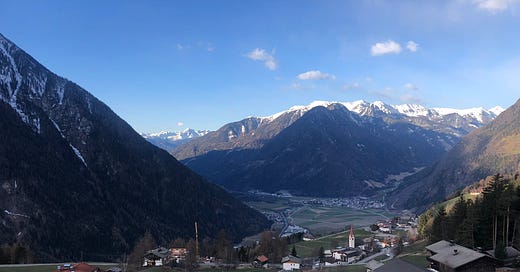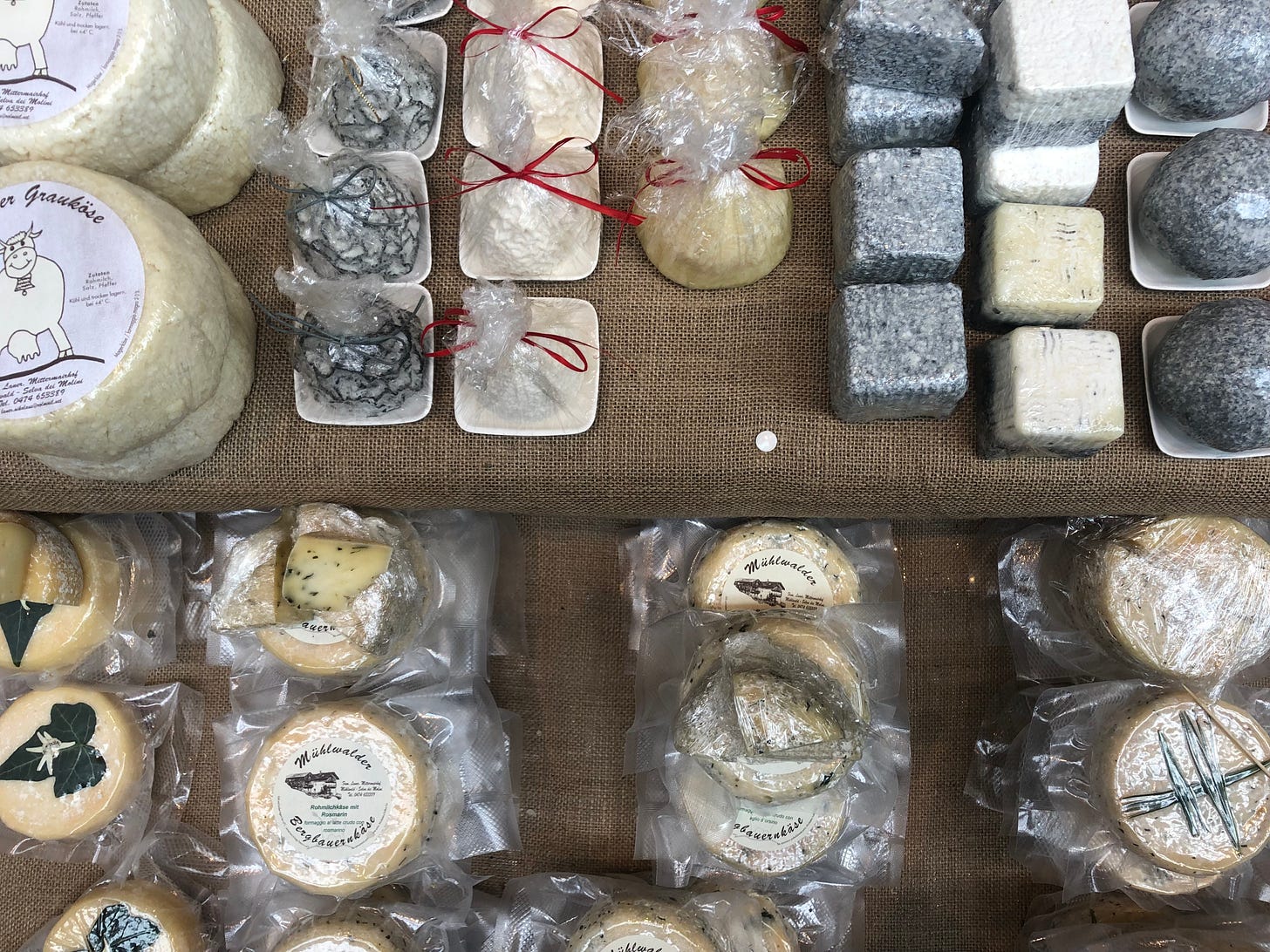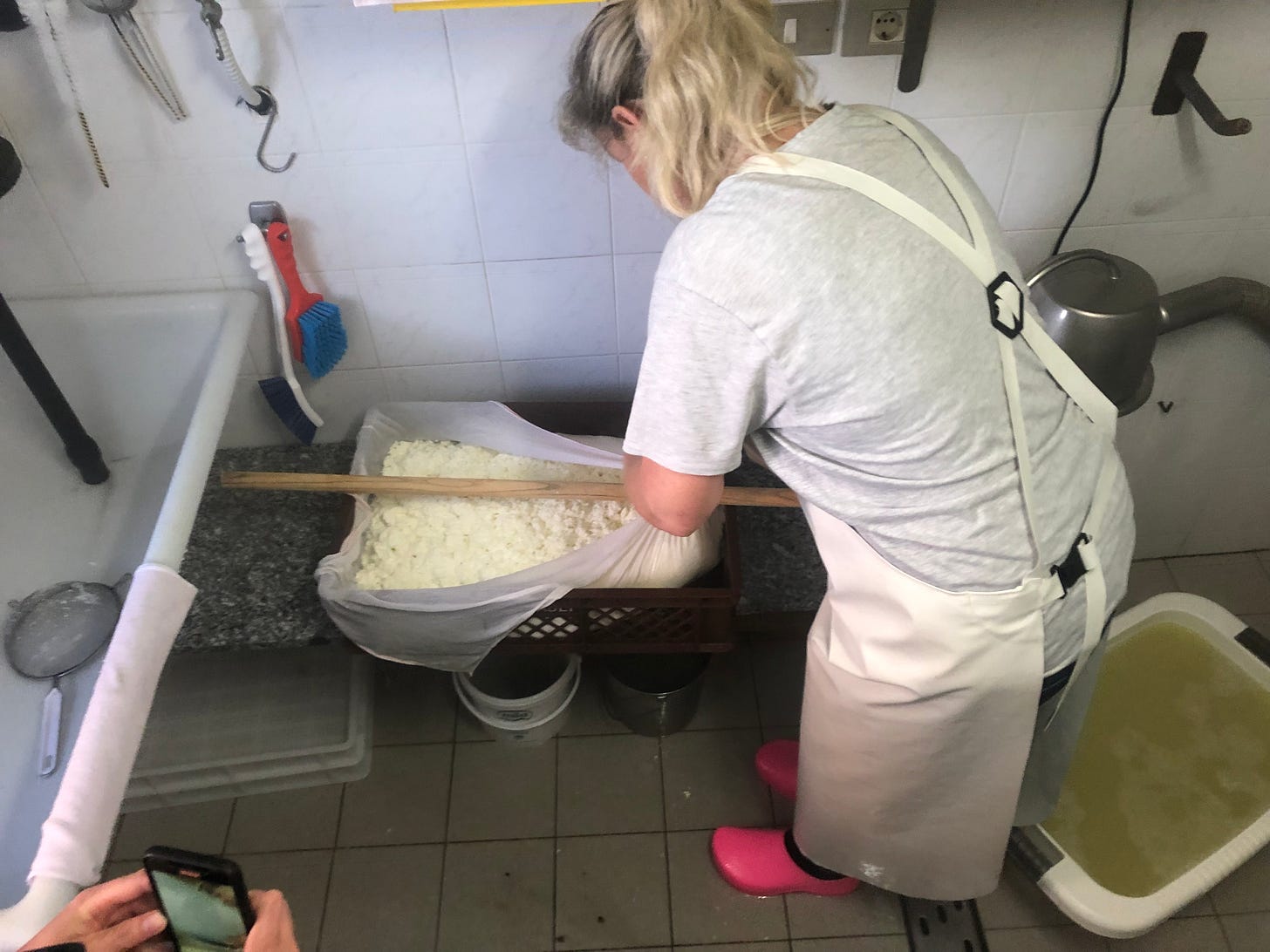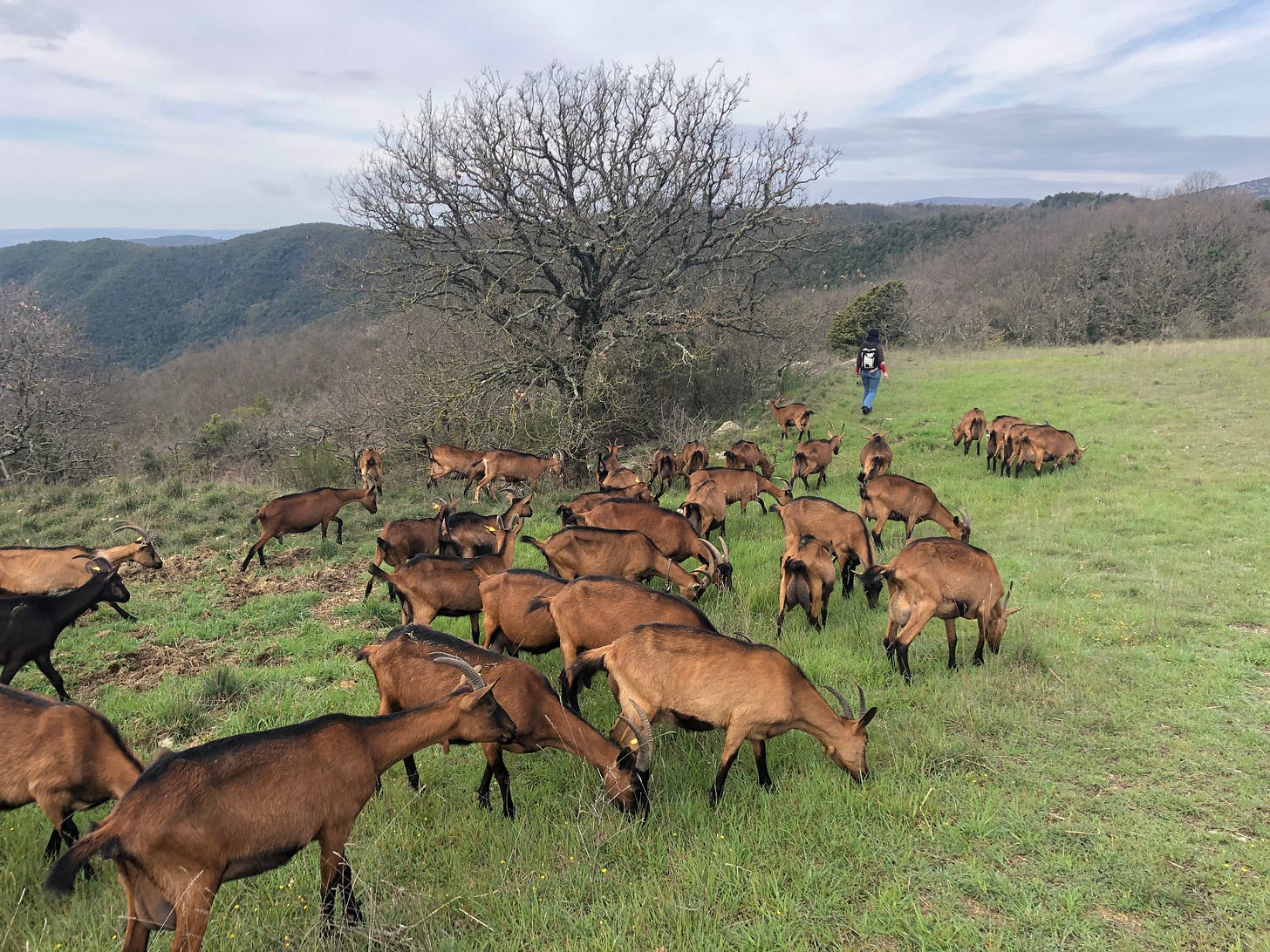Südtirol, or South Tyrol, is nominally a region of Italy that was formerly a part of Switzerland and Austria, and maintains distinct cultural identities. In the eastern Austrian portion that we visited, people speak a dialect of German, and signs are written in this language above an Italian version. In ways the vibe reminds me of the Basque Country, and a big part of any statement of cultural sovereignty is food. The cuisine here is more reminiscent of Austria then Italy. There are strong dairying traditions, although these are undergoing transition. Seasonal transhumance from valley farms to summer alpage alms is practiced, with butter being the main product. A cheese is made from the resulting skim milk called Graukase, which means grey cheese. I will focus on this ancient rennet-less relic as a symbol of the dairying culture of Südtirol.
Butter is made by separating cream from milk, then churning the cream. When cream is agitated enough, the milk fat globule breaks apart and the fat separates from the liquid. The liquid (buttermilk) is drained off and can be drunk or fed to animals. The butter is washed, and pressed by hand to remove as much liquid as possible. There are many places in the world where butter is the main dairy product, such as the Alps, Scandinavia, and Tibet. The issue arises of what to do with the skim milk that remains, and many cheeses have evolved from this reduced fat, yet protein rich milk. The production of lactic skimmed milk cheeses without the use of rennet has a long history in Südtirol and Austria, and I imagine other places.
I came to Südtirol with my travel partner Carina because we were invited to attend a biannual event called Käsefestival. I didn’t know much about the cheeses here, but had tasted Graukase and found it intriguing. I didn’t enjoy it at first taste, but wanted to understand it and taste it in place, from the people who make it. It was served to us with vinegar and onions and was shockingly pleasant. There are textures in this cheese that I had not experienced, a blend of gummy exterior and crumbly center with various sizes of grains and crumbs. We had it from multiple producers, and the older stuff has distinct gamey flavors that I still need to spend time getting used to. This could be called an acquired taste, and that’s the whole point of my culinary philosophy; to learn to appreciate the endless diversity of cheese flavor/textures and how they fit into their cultural/ecological context.
After the festival we visited a producer we had met to learn more. Agnes Laner and her family operate Hofkaeserei Mittermair where they milk a handful of cows and produce butter and cheese in a small creamery beneath their house. In the summer they move to an alm which is a summer alpine grazing area and house that is leased by a local governing body in a process I don’t fully understand. They stay up there with their cows and some animals from other farms, grazing a mixed herd of about 15 cows and 40 goats on alpine meadows. They also operate a kind of restaurant at the alm for folks willing to walk up, and this is an important source of income. We drove up a winding road to the family home on a brisk morning, past meticulously orderly dairy farms, the mountain vistas becoming increasingly stellar as we climbed.
The cheese vat was full of skimmed milk that had been heated to 35c and cultured with a bit of the cheese from the previous batch, then allowed to cool and sour over 24 hours. It had fermented (soured) enough to coagulate to a consistency of soft yogurt without the addition of a coagulant. This is known as lactic coagulation and happens once milk gets down to around pH 4.6. At this point Graukase leaves the typical trajectory of lactic cheeses as its curd is cut and then heated over the course of about 1.5 hours on the day we visited. It is heated without stirring to 45, then stirred briefly and the temperature allowed to drop back down to 30. This happens multiple times as the delicate curd firms up and the whey becomes more clear than that from full fat cheeses or Ricotta.
When the curd was initially cut it smelled similar to a very yeasty kefir. This smell immediately reminded me of milk on its first round of clabbering when it is more yeasty than sour to the nose. I have made many clabber starters, or simply judged the quality of raw milk, by allowing it to sit in a warm room for 24-48 until it thickens into a gel. Often the first round smells a bit funky yeasty gamey, and I add a bit of this to fresh milk and repeat a few more generations to strength the lactic acid bacteria to the point where the milk gets thick and sour in 24 hours. The soured skim milk for Graukase obviously had a significant yeast aspect, and I imagine this imparts a lot of the flavors in the final cheese. I only observed one make, so I can’t say for sure.
The clear whey is drained off, and curd mats removed into a large cloth that is hung to drain. This curd mass is then broken by hand into a mixture of large and fine crumbles that are salted to taste along with a bit of black pepper. The curds are placed into molds to create 2 variations: unpressed and pressed. The first is loosely filled so there are gaps, this cheese will turn yellow and dry throughout and be eaten at 1-2 weeks. The second is packed tightly to make a cheese that will stay white inside, with an outer layer of grayish rubbery texture that will age 3 weeks or longer. They are stored in a screened box at cool room temperature without humidity control.
The last 6 weeks have been the most eventful and fruitful month of milk trekking for me yet. A lot of this is due to having a fabulous cheese loving multilingual travel partner who makes a lot of connections I never could alone, with my linguistic poverty, and brash American social approach.
Sicily, Umbria, and Sudtirol are unique culturally, culinary, and climatically. The fact that all are nominally in one country strengthens my conviction that nation state political boundaries are ephemeral and non binding. There is no such thing as Italian cheese or food inside Italy. Cheese styles in “Italy” follow more deeply rooted patterns, which have then been uprooted and transplanted around the world with the diaspora of “Italian” people. I keep coming back to “Italy” for many reasons, the fierce pride in local cuisine amazes me, the diversity of cheeses would take multiple lifetimes to fully appreciate. Ciao for now Italy, less explored lactic delights are calling out for well deserve attention.
















